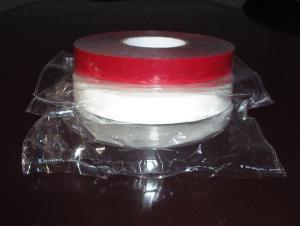Winter is coming, and with it, the chill that can wreak havoc on your home’s plumbing system. One of the most susceptible parts of your plumbing are the PVC pipes. Made from polyvinyl chloride, PVC pipes are durable, lightweight, and cost-effective, but they can become brittle in cold weather, leading to cracks and leaks. That’s where heat tape for PVC pipes comes in – your first line of defense against the winter blues.
The Importance of Heat Tape for PVC Pipes
Heat tape, also known as heat cable, is an electric heating system designed to wrap around pipes to prevent freezing. It’s particularly important for PVC pipes because unlike metal pipes, PVC doesn’t handle the cold very well. The heat tape warms the pipe, ensuring the water inside doesn’t freeze and cause damage.
How Heat Tape Works
You might be wondering how this magical tape works. It’s pretty straightforward. Heat tape is self-regulating, which means it adjusts its heat output based on the temperature of the surface it’s wrapped around. When the temperature drops, the tape automatically increases its heat output, and when it rises, it decreases. This ensures that your pipes are protected without wasting energy.
Types of Heat Tape for PVC Pipes
There are a couple of types of heat tape you can use for PVC pipes. The first is the self-regulating type, which we’ve already discussed. The other is the constant wattage type, which provides a steady amount of heat regardless of the temperature. While it’s less energy-efficient, it’s a good option for pipes that need a consistent heat source.
Installing Heat Tape on PVC Pipes
Now, let’s talk about the fun part – installing the heat tape. It’s a simple process that you can do yourself, saving you the hassle and cost of hiring a plumber. Here’s a step-by-step guide:
1. Inspect the Pipe: Before you start, make sure the pipe is clean and dry. Any dirt or moisture can affect the heat tape’s performance.
2. Measure and Cut: Measure the length of the pipe and cut the heat tape accordingly. Don’t worry if you’re not precise; it’s better to have a little extra than not enough.
3. Wrap the Tape: Start wrapping the heat tape around the pipe, making sure it’s snug but not too tight. You don’t want to restrict the pipe’s movement.
4. Secure the Ends: Use the adhesive on the tape to secure the ends. If the tape didn’t come with adhesive, you can use electrical tape to keep it in place.
5. Plug It In: Finally, plug the heat tape into an outlet. Make sure it’s a GFCI-protected outlet to prevent any electrical mishaps.
Maintenance and Safety Tips
While heat tape is low maintenance, there are a few things you should keep in mind to ensure it works effectively and safely:
– Check the Tape Regularly: Inspect the heat tape periodically for any signs of wear or damage. Replace it if necessary.
– Avoid Overlapping: When wrapping the tape, avoid overlapping it. This can cause hot spots and potentially damage the tape or the pipe.
– Monitor the Temperature: Keep an eye on the temperature settings. If the heat tape is too hot, it can damage the PVC pipe.
– Use a Timer: If you’re going to be away for an extended period, consider using a timer to control the heat tape’s operation. This can save energy and prevent overheating.
When to Use Heat Tape for PVC Pipes
Knowing when to use heat tape is crucial. Here are a few scenarios where it’s particularly useful:
– In Cold Climates: If you live in an area with harsh winters, heat tape can be a lifesaver.
– For Outdoor Pipes: Pipes that are exposed to the elements are more susceptible to freezing.
– During Construction: When new pipes are laid, they’re more vulnerable to damage from freezing temperatures.
– For Seasonal Homes: If you have a vacation home or a property that’s not occupied year-round, heat tape can protect your pipes when you’re not around.
The Benefits of Using Heat Tape for PVC Pipes
There are several benefits to using heat tape for PVC pipes, including:
– Prevention of Pipe Damage: The primary benefit is preventing pipes from cracking or bursting due to freezing.
– Energy Efficiency: Heat tape is energy-efficient, especially the self-regulating type, as it only uses as much energy as needed.
– Cost-Effective: Compared to the cost of repairing or replacing damaged pipes, heat tape is a cost-effective solution.
– Easy Installation: As mentioned earlier, installing heat tape is a DIY job, saving you money on labor costs.
– Peace of Mind: Knowing that your pipes are protected gives you peace of mind, especially during those cold winter nights.
The Downside of Heat Tape
While heat tape is generally a great solution, it’s not without its downsides. Some potential issues include:
– Electrical Hazards: If not installed correctly, heat tape can pose an electrical risk.
– Overdependence: Relying solely on heat tape without proper insulation can lead to increased energy consumption and higher bills.
– Not a Long-Term Solution: Heat tape is a temporary fix and should be combined with other measures for long-term protection.
Conclusion
Heat tape for PVC pipes is a simple yet effective way to protect your plumbing system during the cold weather. It’s easy to install, energy-efficient, and can save you from costly repairs. However, it’s important to use it correctly and combine it with other protective measures for the best results. So, as the temperature drops, don’t let your pipes take the chill – wrap them up with heat tape and keep your home cozy and protected.

